Ad
Articles
Voltage Stabilizer Buying Guide: Protect Your Devices
Key Highlights:
• Voltage stabilizers provide steady, consistent power to protect appliances from surges and spikes.
• Fluctuating voltages can damage appliances and electronics, cause malfunctions and heating issues.
• Types of voltage stabilizers: electronic, ferromagnetic, and servo-motor-operated.
• Key benefits include protecting appliances, improving efficiency and appliance lifespan
• When selecting a voltage stabilizer, calculate total appliance wattage, check the input voltage range.
Buying a Voltage Stabilizer: How To Choose One for Your Appliances?
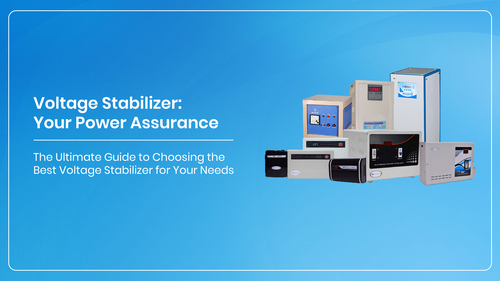
Voltage stabilizers play a crucial role in regulating and stabilizing voltage levels, keeping power delivery steady and consistent to protect sensitive home appliances and electronic devices from potentially damaging voltage fluctuations and spikes.
What is a Voltage Stabilizer?
A voltage stabilizer is an electrical device that provides a constant voltage output to an electrical gadget, regardless of fluctuations in the input voltage. It is also called an automatic voltage regulator (AVR). Voltage stabilizers defend gadgets from damage caused by overvoltage, below-voltage, and different power surges. They are commonly used with high-priced and sensitive gadgets like air conditioners, medical equipment, business machines, and electronics.
Voltage stabilizers work by regulating the fluctuating input voltage before turning it into the related load. The output voltage remains within 220-230V for a single section or 380-400V for a 3-phase, even when the input voltage fluctuates. This regulation is executed through inner circuitry that plays buck and raises operations.
Why are Voltage Stabilizers Necessary?
An electrical system is designed to perform within a positive input voltage range based totally on its sensitivity. For instance, some can tolerate ±10% fluctuation at the same time as others, only 5% or less. However, voltage fluctuations are commonplace in lots of regions because of reasons like lightning, faults, mistaken wiring, or load switching.
When it comes to ensuring the durability and best functioning of your appliances, a stable power source is important. That's where a reliable stabilizer like V-Guard comes in, with a variety of options to help your appliances perform accurately. It safeguard your television, refrigerator, and everything in between from voltage fluctuations.
Prolonged overvoltage can cause:
-
Permanent damage
-
Insulation damage
-
Load interruption
-
Increased cable losses
-
Reduced equipment existence
Similarly, prolonged exposure to voltage can cause:
-
Equipment malfunction
-
Increased heating
-
Reduced overall performance
-
Motor pace reduction
-
Computational errors
The voltage balance directly influences the ideal and safe operation of an electrical system. Voltage stabilizers make certain the supply voltage fluctuations do not affect the linked load.
How Does a Voltage Stabilizer Work?
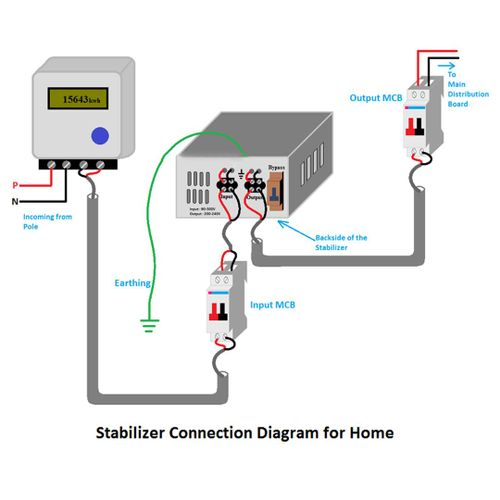
Here is a brief overview of the ways a voltage stabilizer works:
-
It takes in AC input strength, which could have fluctuations.
-
The input voltage is stepped down via a transformer.
-
This reduced input voltage is fed to a voltage-sensing and controlling circuit.
-
This circuit continuously monitors the output voltage and compares it with the favored preset voltage.
-
Whenever the output voltage deviates from the preset voltage, the circuit effectively regulates the output voltage. The regulated, stabilized output is then fed to the burden or appliances.
So, in essence, a voltage stabilizer maintains a constant output voltage notwithstanding extensive fluctuations in the input AC voltage. This provides secure and stabilized power to guard your sensitive appliances.
Types of Voltage Stabilizers
There are three different varieties of voltage stabilizers:
1. Electronic Voltage Stabilizers
These use digital additives like diodes, capacitors, inductors, and resistors to screen and regulate output voltage. They are compact, green, and correct in stabilizing output voltage.
2. Ferromagnetic Voltage Stabilizers
These incorporate a ferromagnetic middle transformer and operate on the principle of magnetic saturation of the transformer core. They are cumbersome and noisy, but they are value-effective stabilizers.
3. Servo-Motor-Operated Voltage Stabilizers
These stabilizers use a servo motor to regulate the input voltage to preserve a constant output voltage. They combine the accuracy of electronic stabilizers with the ruggedness of magnetic stabilizers.
Key Uses and Importance of Voltage Stabilizers
Here are some key reasons why you must use a voltage stabilizer:
Protect Your Home Equipment: Fluctuating voltage can harm the sensitive inner circuits and components of electrical and electronic home equipment. A stabilizer maintains safe voltage ranges.
Improve Appliance Existence: By allowing appliances to function at their chosen voltage ranges, a stabilizer improves their overall performance and extends their lifespan.
Save Strength: Appliances characteristically operate at maximum efficiency at their rated voltage. A stable voltage supply improves their power efficiency.
Safeguard Device: Expensive equipment like laser printers, medical equipment, laboratory devices, and so forth requires stabilized voltage for correct functioning and safety.
Prevent Facts Loss: Servers, computer systems, and other digital devices want stabilized voltage supply to prevent statistics loss and gadget crashes because of below-voltage.
So by installing an excellent voltage stabilizer, you can protect your appliances, equipment, and devices from voltage fluctuations. This saves you cash by stopping damage and enhancing the device's existence.
Pros and Cons of Using a Voltage Stabilizer:
Pros:
-
Protects appliances from voltage fluctuations
-
Increased existence span of gadgets
-
Improves overall performance and the performance of the system
-
Saves strength consumption and power prices
-
Prevents statistics loss on computers and servers
-
Safeguards sensitive or expensive medical and laboratory gadgets
-
Compact size and low cost for maximum home stabilizers
Cons:
-
Adding an extra aspect to the electricity delivery line might also affect performance.
-
Electronic stabilizers may additionally fail over the years, requiring restoration or replacement.
-
Higher-potential stabilizers are bulkier and more costly.
-
You need to pick a suitable voltage and electricity score according to your requirements.
-
Magnetic stabilizers can produce a slight buzzing noise.
However, the professionals far outweigh the few barriers. So having the proper voltage stabilizer gives you priceless protection for your home equipment.
How Do You Choose the Right Voltage Stabilizer?
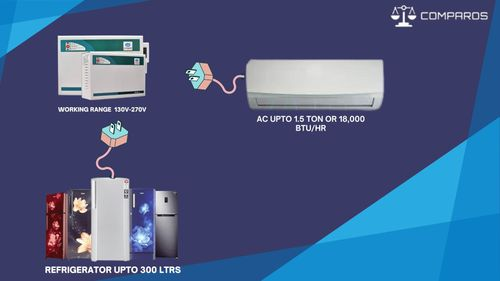
Here are a few key elements to consider while deciding on a voltage stabilizer:
Calculate the whole electricity requirement by adding up the power rankings of all your home equipment and devices. Select a voltage stabilizer with at least 25% higher capability than your general load for a protection margin. Improve the margin to 50% if your energy wishes may also grow in the future.
Check the input voltage variety of the stabilizer. It must, without difficulty, cover the voltage fluctuations in your area. For most Indian houses, 140V to 280V is a top-quality input range.
Faster response times suggest quicker correction of voltage spikes. Look for stabilizers with a 5-second reaction time.
Consider useful features like LED/LCD, time postponement, dual voltage settings, car reset, surge protection, and noise filtering.
Also look at the logo, kind, warranty length, and protection certifications like ISI, CE, and so forth.
To provide the utmost safety for your home equipment, carefully assess your needs and select an appropriately sized stabilizer from a trusted brand.
| Sub-Category | Working Range | Appliances |
|---|---|---|
| Stabilizer for AC | 170V - 270V | AC Up to 1.5 Ton or 18,000 Btu/Hr |
| Stabilizer for AC | 170V - 270V | AC up to 2 Ton or 24,000 Btu/Hr |
| Digital Stabilizers | 90V-290V | One LED/LCD/ 3D TV Up to 107cm & Home Theater, DVD/DTH |
| Stabilizers for Refrigerators | 135V-280V | Refrigerator up to 300 Ltrs |
| Stabilizers for Refrigerators | 130V-290V | Refrigerator up to 300 Ltrs |
| Stabilizers for CRT TV Stabilizers for Washing Machines | 90V-300V 150V - 280V | TV up to 53 cm + DVD/DTH Washing Machine |
| Mainline Stabilizers | 90V - 300V | Main Line |
Conclusion
Voltage stabilizers are critical for protecting highly-priced home equipment and gadgets from changes in voltage. They offer steady AC voltage delivery, which increases the lifespan, protection, and performance of devices. A tremendous voltage stabilizer that suits your budget will prevent hassle, downtime, and cash, ultimately protecting your private home electronics from electric harm. It's smart to put in an appropriate voltage stabilizer now to deliver your appliances with the stable electricity they want.
FAQs:
Q. Why is the use of a voltage stabilizer important for my home equipment?
A. Using a voltage stabilizer guarantees a consistent and secure voltage delivery, protecting appliances from damage due to voltage fluctuations.
Q. How does a voltage stabilizer contribute to electricity performance?
A. By maintaining a steady voltage supply, voltage stabilizers help home equipment function more efficiently, decreasing electricity consumption and probably extending its lifespan.
Q. Are there different stabilizers for different appliances?
A. Yes, there are different voltage stabilizers designed for different types of appliances based on their power requirements. For example, a stabilizer for a refrigerator may have a higher rating (e.g., 2 kVA) compared to one for a television (e.g., 1 kVA) due to the refrigerator's higher power consumption.
Q. How much load can a 1kVA stabilizer take?
A. 1kVA stabilizer can handle up to 1kVA of load. Specifically, it is suitable for running appliances such as air coolers, 1 LCD/LED TV up to 84 inches, a refrigerator up to 290L, 1 computer, a washing machine without a heater, an electric iron, a juicer mixer grinder, and a 0.5HP water pump. The total load connected should not exceed 4 Amps, which equates to 1kVA.
Follow Us:
Ad
Recent News

Samsung Unveils Exynos 2600, the World's First 2 nm Chipset
19-Dec-2025 06:30 AM

Google Unveils Gemini 3 Flash: Faster AI That Outshines Pro Model
18-Dec-2025 09:55 AM

Motorola Edge 70 Launches in India: Slim Design, Strong Battery
15-Dec-2025 07:14 AM
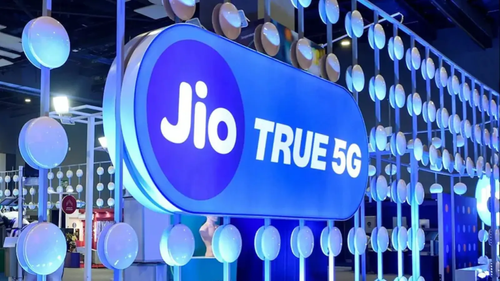
Jio’s Happy New Year 2026 Plans: Get Unlimited 5G and more
15-Dec-2025 06:38 AM

Amazon Bets Big on India’s AI Boom with New 2030 Roadmap
12-Dec-2025 12:23 PM
Reviews & Guides
View All

Nothing Phone 3a Community Edition First Impressions: A Fresh Take on Budget Smartphones

Realme P4x 5G Review: Budget-Friendly Beast with Epic Battery Life

Sony BRAVIA 7 Mini LED K-65XR70 vs. Haier Mini LED H65M95EUX

Samsung QN90F (65QN90FAU) Review: The King of Bright-Room Viewing

Why doesn’t Apple reveal the iPhone battery in advertisements?

Donald Trump Watch Collection: Timeless Luxury on the Wrist

Best 5 Litre Water Heaters in India 2025: Top Latest Models for Quick Hot Water
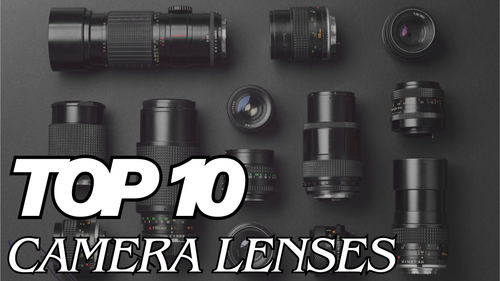
Top 10 camera lenses you should Own in 2025
Ad
Latest Mobiles In India
Ad
Ad












